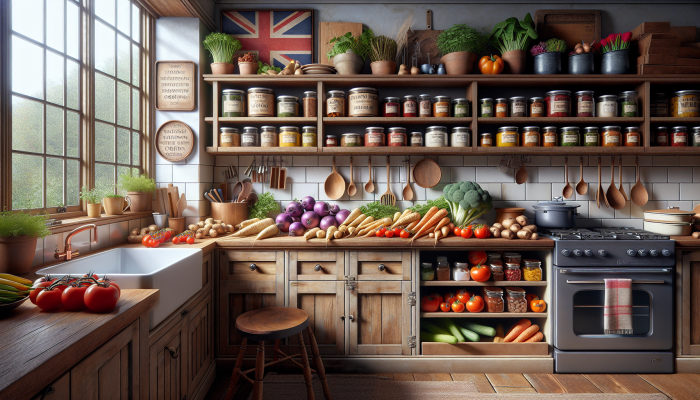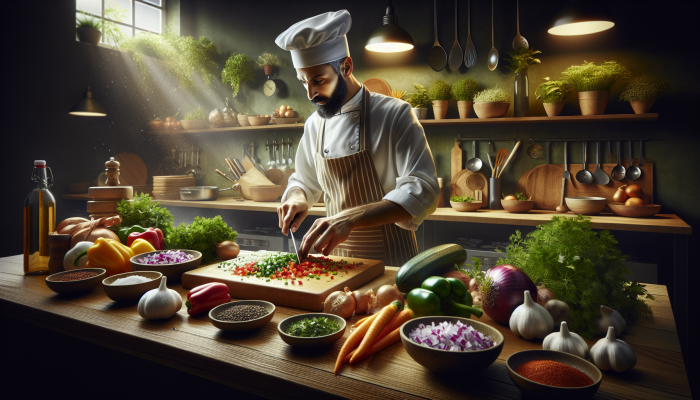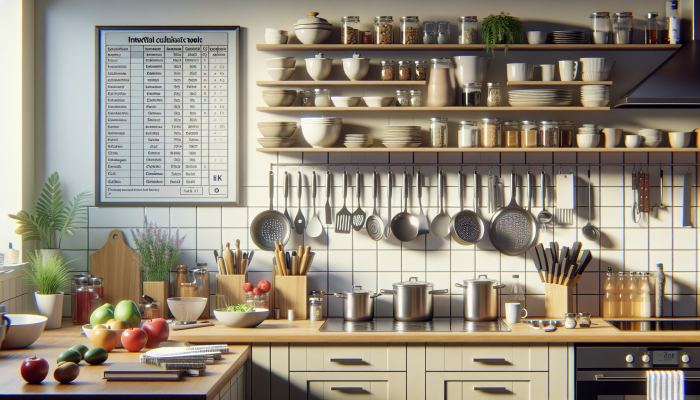Transform Your Batch Cooking Expertise with Strategic Planning Techniques
Choose Tasty and Practical Recipes for Successful Batch Cooking Adventures

Selecting the most suitable recipes is paramount for achieving effective batch cooking. Focus on meals that are not only delicious but also designed for freezing, ensuring they can be reheated flawlessly when the time comes. Renowned British dishes like <a href="https://electroquench.com/immune-system-boosting-foods-your-essential-guide/">shepherd's pie</a>, curry, and chilli serve as fantastic examples. These meals often improve in flavour after freezing, as the spices and seasonings develop and harmonise beautifully over time. Additionally, integrating seasonal produce allows you to make the most of local UK markets. For example, during autumn, incorporating hearty root vegetables such as carrots and parsnips can elevate your casseroles, while summer brings fresh tomatoes and courgettes that enliven your sauces.
As you curate your collection of recipes, it is crucial to take into account the varied tastes and dietary needs of your family members. Strive to include a well-rounded selection of protein sources, featuring chicken, beef, and plant-based alternatives to cater to everyone's preferences. Incorporating vegetarian and vegan options into your repertoire can also diversify your meal offerings, as these dishes are often simple to prepare and freeze effectively. By assembling a diverse and thoughtfully chosen selection of meals, your batch cooking experience will not only be efficient but also a source of joy for everyone involved.
Develop a Detailed Shopping List for Effortless Batch Cooking Preparation
Once you have finalised your recipe selections, the next step is to compile a comprehensive shopping list that includes all required ingredients. Prioritise items that are easily accessible in UK supermarkets such as Tesco, Sainsbury’s, or Asda. Begin by listing fresh produce, then move on to essential pantry staples like rice, pasta, and canned goods. Be sure to check your cupboards and refrigerator beforehand to prevent unnecessary purchases and ensure that you have everything required to simplify your cooking process.
Effectively organising your shopping list can significantly enhance your efficiency while navigating the supermarket aisles. Categorise items by type—such as fruits, vegetables, proteins, dairy, and dry goods—to save time and minimise the risk of forgetting key ingredients. Furthermore, keep an eye out for local promotions or discounts; these can greatly assist you in saving money on ingredients that you'll utilise for your batch cooking preparations.
Allocate Dedicated Time for a Successful Batch Cooking Session
Setting aside a specific day for your batch cooking session can greatly enhance your meal preparation for the upcoming week. Many individuals find Sundays to be the ideal choice, as it allows for a relaxed yet productive cooking experience without the usual pressures of a weekday schedule. Aim to carve out a substantial block of time, ideally between 4 to 6 hours, to ensure you have the opportunity to prepare multiple dishes without feeling rushed or overwhelmed.
Establishing a structured cooking timetable can further improve your efficiency during this process. Segment your cooking time into dedicated intervals for various tasks—such as ingredient preparation, cooking, and cleaning up. This organised approach not only helps keep you on track but also enhances your enjoyment of the culinary process. Consider playing your favourite music or listening to an engaging podcast while you cook; this can transform what could otherwise be a tedious chore into an enjoyable and enriching experience.
Strategically Prepare Ingredients for Successful Batch Cooking Outcomes

Meticulously Wash and Chop Ingredients for Outstanding Cooking Results
Before embarking on your cooking journey, it is essential to meticulously wash and chop all your ingredients. Start with staples such as potatoes, carrots, and onions—key components of many beloved UK recipes. Thoroughly washing vegetables eliminates dirt and pesticides, ensuring your meals are safe, nutritious, and delightful.
Once cleaned, proceed to chop your ingredients. Ensuring uniformity in size promotes even cooking and enhances the visual appeal when serving your meals. Investing in a quality knife and a sturdy cutting board can significantly ease this task, making it more enjoyable. If time permits, consider pre-chopping your vegetables the evening before your cooking day. This approach can save you valuable time and give you a head start on your batch cooking efforts.
Precisely Measure Ingredients for Consistent and Delicious Outcomes
Utilising metric measurements is standard practice in the UK, so ensure your recipes reflect this for accuracy. Invest in a dependable set of kitchen scales and measuring cups that cater to both dry and wet ingredients. This meticulous attention to detail can dramatically influence the flavour and texture of your finished dishes, making a considerable difference.
It may also be advantageous to keep a conversion chart readily available in your kitchen for any recipes originating from abroad that utilise imperial measurements. This handy tool can save you time and prevent confusion. For optimal results in your batch cooking, always measure ingredients accurately, particularly spices and seasonings, as even a slight variation can significantly affect the final result.
Establish an Organised Workstation for Effortless Cooking Experiences

An efficient workstation is vital for mastering effective batch cooking. A well-organised kitchen streamlines your cooking process, making it less daunting and more enjoyable. Ensure that all your essential tools—knives, pans, pots, and utensils—are easily accessible to facilitate a smooth cooking experience.
Consider the typical layout of a UK kitchen, which often has limited counter space. Utilise this area wisely by only keeping essential items on your countertops. Use bowls or containers to group ingredients by dish, thereby improving your overall efficiency. Moreover, starting your cooking session with a clean workstation creates a more inviting atmosphere, enabling you to focus entirely on your meal preparation without distractions.
Crucial Cooking Techniques for Successful Batch Cooking
Perfect Simmering and Boiling Techniques for Impeccable Dishes
Mastering the essential cooking techniques of simmering and boiling is vital for anyone aiming to batch cook effectively. These methods are frequently employed in British cuisine, particularly for hearty dishes like soups and stews. When simmering, the objective is to maintain a gentle heat that allows flavours to meld harmoniously while ensuring all ingredients are thoroughly cooked and infused with taste.
For boiling, especially with ingredients such as potatoes or pasta, utilise a large pot filled with salted water to enhance the flavour of your dish. Timing is crucial—overcooking can lead to mushy vegetables or pasta, while undercooking can result in unappetising textures. Investing in a kitchen timer can assist you in tracking cooking times, ensuring consistently excellent results with each batch you prepare.
Embrace Roasting and Baking Techniques to Elevate Flavour Profiles
The oven serves as an incredibly versatile tool in your batch cooking repertoire, ideal for both roasting and baking. For example, roasting meats like chicken or pork can yield wonderfully succulent results, making them perfect for batch cooking. Using a roasting pan ensures even cooking, while occasional basting keeps the meat moist and infused with flavour.
Baking also plays a significant role, particularly for classic British dishes such as meat pies or quiches. These meals can be prepared in advance, frozen, and reheated with ease. While your food is roasting or baking, utilise that time to tidy your workspace or prep your next dish. This proactive approach can significantly reduce your overall cooking time while maintaining a clean and organised kitchen.
Adopt Slow Cooking for Unmatched Convenience and Flavour
Slow cooking has gained immense popularity in recent years, particularly among busy households seeking convenient meal solutions. Using a slow cooker for dishes like casseroles allows for a ‘set it and forget it' approach, enabling you to prepare wholesome, hearty meals with minimal effort. The extended cooking times allow flavours to develop fully, resulting in complex, comforting dishes that are ideal for batch cooking.
When using a slow cooker, it’s essential to layer your ingredients correctly. Start with denser items like root vegetables at the bottom, followed by proteins, and then pour liquids and spices on top. This method ensures even cooking and prevents any ingredients from becoming burnt or overly mushy. Once your meal is ready, allow it to cool before portioning out for freezing or refrigeration to ensure maximum freshness.
Store Your Batch-Cooked Meals to Ensure Lasting Freshness
Understand the Importance of Properly Cooling Meals Before Storage
After preparing your meals, allowing them to cool to room temperature is imperative before storage. This step is essential to prevent condensation inside storage containers, which can lead to unwanted ice crystals forming during freezing. Following UK food safety guidelines, aim to cool your meals within two hours before refrigeration or freezing to maintain quality.
For larger batches, consider dividing your meals into smaller portions. This practice not only aids in quicker cooling but also simplifies reheating throughout the week. Place your meals in shallow containers to expedite the cooling process, and avoid stacking them until they are completely cool to prevent any unwanted sogginess.
Clearly Label Containers for Effortless Identification
Clear labelling is a vital component of any batch cooking strategy, ensuring that you know what meals are stored and when they were prepared. Use labels to indicate the date and contents of each container, which can be particularly advantageous during busy weeks when time is constrained.
Investing in a marker or label maker that is easy to read can be a transformative step. Consider colour-coding your labels based on dish type or family member preferences. This simple organisational tweak can save you time and reduce stress when searching through your freezer for that perfect meal.
Maximise Freezer Space for Effective Batch Cooking Storage
Optimising your freezer space is essential for successful batch cooking. An organised freezer not only facilitates easy meal retrieval but also helps minimise food waste. Consider using stackable, airtight containers that fit well within your freezer. This approach conserves space while prolonging the freshness of your meals.
Arrange your freezer to allow easy access to frequently used items. For example, designate specific zones for different types of cuisine or meal categories, such as casseroles, soups, or baked goods. Keeping a running list of what you have in your freezer can also help minimise duplication and ensure that older meals are used first, contributing to better organisation and efficiency.
Select the Best Containers for Storing Your Meals Effectively
When it comes to meal storage, choosing the right containers is critical for maintaining the quality of your batch-cooked dishes. Opt for airtight containers that are BPA-free, ensuring they are safe for food storage. Glass containers are an excellent choice due to their durability and the fact that they won’t absorb flavours or stains, keeping your meals fresh and appealing.
Carefully consider the size of your containers. Choose sizes that match your typical portion requirements; smaller containers are ideal for individual meals, while larger ones can accommodate family-sized servings. Stackable containers can also save valuable space in your fridge and freezer, enhancing your kitchen's overall efficiency.
Effortlessly Reheat and Serve Your Delicious Batch-Cooked Meals
Thaw Frozen Meals Safely and Efficiently
When it’s time to enjoy your batch-cooked meals, proper thawing is essential for maintaining food safety. Adhere to UK food safety guidelines, which recommend thawing frozen meals in the fridge overnight rather than at room temperature. This method significantly reduces the risk of bacterial growth, ensuring your food remains safe and enjoyable to eat.
If you're pressed for time, consider using a microwave’s defrost setting, but exercise caution to avoid uneven cooking. Always ensure that any meat dishes reach a safe internal temperature before serving. Understanding these guidelines will make your meal preparation not only efficient but also safe for your family’s enjoyment.
Explore Effective Techniques for Reheating Batch-Cooked Meals
Reheating your batch-cooked meals can be accomplished through several methods, depending on the type of dish and the equipment available. Microwaving is the quickest method, particularly effective for soups, stews, and casseroles. When using the microwave, cover your container with a lid or microwave-safe wrap to retain moisture and ensure even heating throughout.
Alternatively, reheating in the oven can provide a crispier finish, especially for dishes such as lasagna or shepherd's pie. Preheat your oven to around 180°C (350°F) and cover your dish with foil to prevent it from drying out. By employing these methods, you can guarantee your meals remain delicious and satisfying, regardless of how many times they are reheated.
Enhance Meal Presentation for a Memorable Dining Experience
The presentation of your meals can significantly elevate the dining experience, making even reheated dishes feel special and inviting. Simple garnishes such as fresh herbs, a sprinkle of cheese, or a dollop of sour cream can enhance both the flavour and visual appeal of your meals, creating a feast for the senses.
Pair your main dishes with traditional sides that are beloved in the UK, such as peas or Yorkshire puddings. These small yet thoughtful touches can have a substantial impact when serving meals to family or guests, transforming everyday cooking into a delightful experience that everyone will cherish and remember.
Maintain Proper Serving Temperatures for Optimal Enjoyment
Serving meals at the correct temperatures is vital for both safety and enjoyment. Hot dishes should ideally be served at temperatures above 70°C (158°F), while cold dishes must be kept below 5°C (41°F). Utilising a food thermometer can help ensure that proper serving temperatures are achieved, particularly for meat dishes, avoiding any food safety risks that could arise from improper temperatures.
Encourage family mealtime togetherness, as this not only fosters healthy habits but also strengthens bonds. Setting the table with care, lighting candles, or using attractive serving dishes can create a warm and inviting atmosphere. This attention to detail can transform your mealtime into a cherished ritual that everyone looks forward to participating in, enhancing the overall dining experience.
Maximise Your Efficiency in Batch Cooking Endeavours
Innovative Techniques to Repurpose Leftovers Creatively
One of the most effective techniques in efficient batch cooking is creatively transforming leftovers into new and exciting dishes. The rich culinary heritage of the UK offers ample opportunities for innovation; for instance, leftover roast chicken can be reinvented as a hearty soup or a delicious curry, effectively breathing new life into your previous meal.
Be mindful of how you store your leftovers, ensuring they are labelled and consumed within a few days to maintain their freshness. Consider establishing a schedule for using these items to prevent food waste and optimise your resources. This approach not only saves time but also promotes sustainability in your cooking practices, allowing you to maximise every ingredient and minimise waste.
Utilise Batch Cooking for Special Occasions and Celebrations
Preparing for special occasions such as Christmas, Bonfire Night, or family gatherings can be streamlined through the benefits of batch cooking. Carefully plan your menu well in advance and identify which dishes can be prepared ahead of time. Traditional festive meals like mince pies or turkey casseroles can be made in bulk and stored in the freezer for convenience and ease of serving.
When planning for events, consider the dietary preferences of your guests. Offering a variety of dishes ensures that all dietary needs are accommodated, enriching everyone’s experience. With thoughtful planning and organisation, your batch cooking can alleviate the stress of hosting, allowing you to fully enjoy special occasions alongside your guests without the overwhelming pressure of last-minute preparations.
Continuously Improve Your Batch Cooking Skills for Greater Efficiency
Batch cooking is a skill that can always be refined and enhanced. Regularly evaluating your process enables you to identify what works well and what may need adjusting. You might discover that certain recipes are more popular than others or that your storage methods require optimisation for improved efficiency. Embrace these insights and adapt your methods accordingly to elevate your cooking experience and streamline your batch cooking efforts.
Joining online communities or local groups focused on batch cooking can provide fresh ideas and invaluable support. Sharing experiences with others can lead to new techniques, recipes, and time-saving tips that enhance your cooking process. By continually evolving your batch cooking strategy, you can create a system that seamlessly fits into your busy lifestyle, helping you save time while enjoying nutritious meals that your family will love.
Frequently Asked Questions Regarding Batch Cooking
What is batch cooking, and why is it beneficial?
Batch cooking involves preparing multiple portions of meals simultaneously, enabling you to save valuable time during the week by having ready-to-eat meals readily available at your convenience. This method not only simplifies meal preparation but also promotes healthier eating habits.
How long can I safely freeze meals that have been batch-cooked?
Most batch-cooked meals can be frozen for up to three months. Always label and date your containers for easy identification and to ensure the quality of your meals is maintained over time.
Can I successfully batch cook for just one person?
Absolutely! Batch cooking is highly beneficial for individuals as well, allowing for easy meal preparation while reducing food waste and saving time. You can prepare single servings and enjoy them throughout the week.
What types of meals are best suited for batch cooking?
Meals that freeze and reheat well, such as soups, stews, casseroles, and pasta dishes, are ideal choices for batch cooking due to their ability to maintain flavour and texture after being frozen.
How can I ensure that meals remain fresh in the freezer?
Utilising airtight containers, labelling them with dates and contents, and storing meals in smaller portions will help maintain freshness and quality, ensuring your meals are delicious when you are ready to eat them.
Can I batch cook vegetarian meals successfully?
Certainly! Vegetarian meals are excellent candidates for batch cooking. Dishes like curries, stews, and veggie burgers freeze beautifully and are easy to prepare, providing nutritious options for your meal planning.
What is the best way to reheat frozen meals effectively?
The most effective methods include thawing meals in the fridge overnight and reheating in the microwave or oven until they are thoroughly heated through, ensuring safety and optimal taste.
How can I creatively incorporate leftovers into my batch cooking?
Transform leftovers into new dishes, such as using roasted vegetables in soups or incorporating meats into casseroles or salads for innovative and delicious meal solutions.
What are some time-saving tips for efficient batch cooking?
Planning your meals in advance, prepping ingredients beforehand, and utilising kitchen gadgets like slow cookers or multi-cookers can significantly enhance your efficiency and make batch cooking a breeze.
Is batch cooking a suitable strategy for families?
Yes! Batch cooking is an excellent strategy for families, reducing daily cooking time while providing nutritious meals for everyone, thereby simplifying family life and making mealtimes more enjoyable.
The Article How to Batch Cook Efficiently: A UK Guide Was First Published On https://acupuncture-frome.co.uk
The Article Batch Cook Efficiently: Your Essential UK Guide Was Found On https://limitsofstrategy.com
The Article Batch Cook Efficiently: The Ultimate Guide for the UK found first on https://electroquench.com

